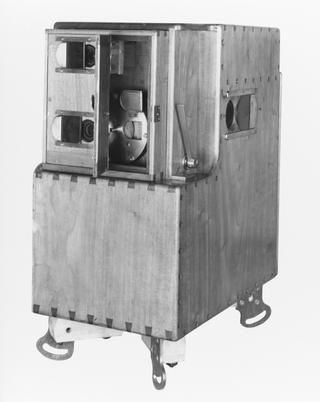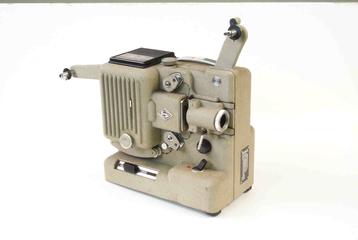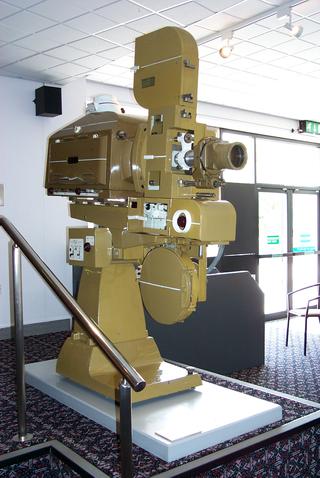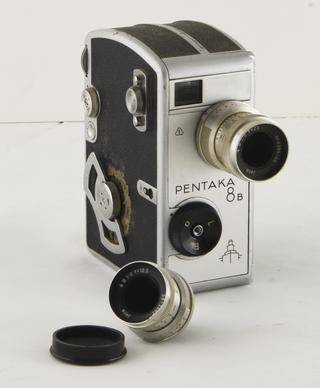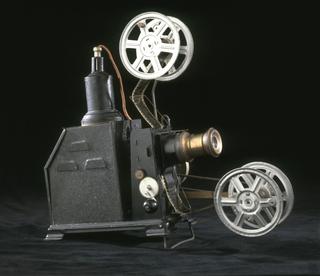
Williamson Topical Paragon 35mm Cine Camera
- PART OF:
- Sarosh Collection of Film Technology
- Made:
- circa 1910 in Hove
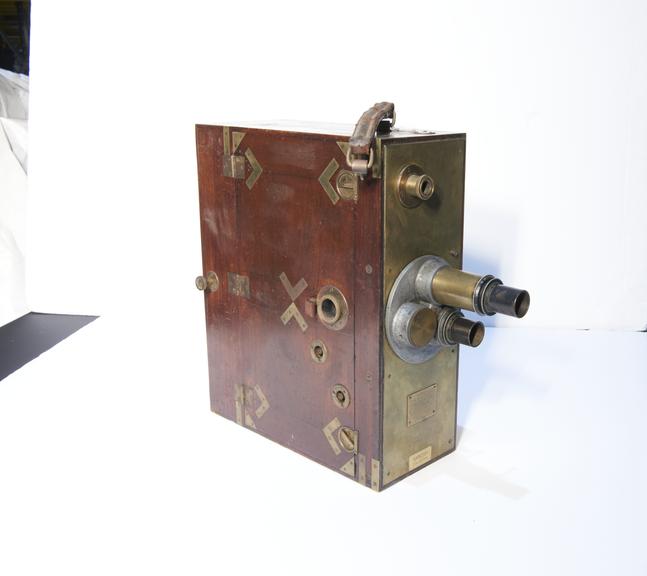
Williamson Topical Paragon 35mm cine camera with three-lens turret holding two lenses, a TTH Cooke F/3.1 2inch and TTH Cooke F/4.5 4¼inch and blanking plate. Metal front plate, wooden body.
James A. Williamson (8 November 1855 – 18 August 1933) was a Scottish photographer and a key member of the loose association of early film pioneers dubbed the Brighton School. He trained to be a master chemist and moved to London in 1868, where he was an apprentice to a pharmacist. He was also a keen amateur photographer who sold photographic apparatus and chemical supplies in his own shop and became an agent for Kodak.
In 1886, he moved his chemist's and photographic business to 144 Church Road, Hove and formed friendships with fellow pioneers Esmé Collings, William Friese-Greene and George Albert Smith, among others, for whom he supplied chemicals and processed films. Williamson, who initially purchased and adapted an apparatus for local showings of Smith's films was, with assistance from the engineer Alfred Darling, able to create his own home-made filming apparatus and begin making films. He later formed the Williamson Kinematographic Company, whch continued after his death in 1933.
Details
- Category:
- Cinematography
- Collection:
- Feroze Sarosh Collection
- Object Number:
- 2007-5005/31
- type:
- 35mm cine camera
- credit:
- The National Media Museum, Bradford
